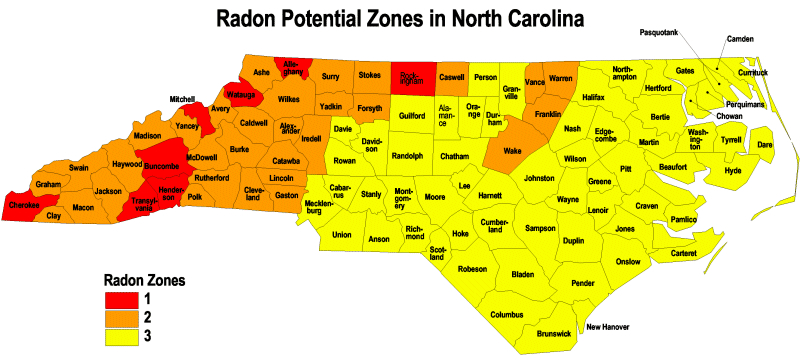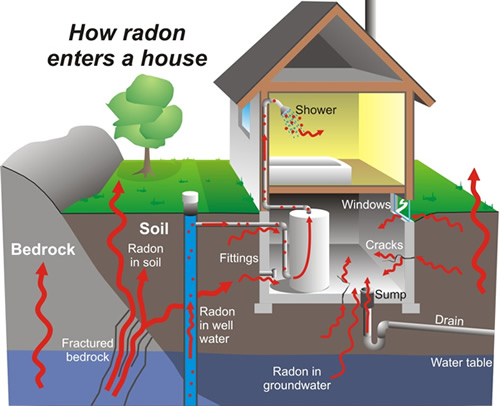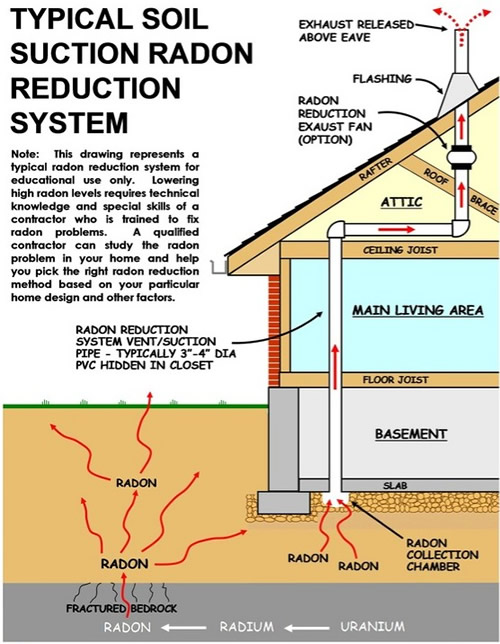Radon is a naturally occurring radioactive gas that is inert, colorless, and odorless. Radon is naturally in the atmosphere outdoors, but it disperses rapidly and generally it is not a health issue. High radon gas exposure occurs inside homes, schools, and workplaces. Radon gas becomes trapped indoors after it enters buildings through cracks and other holes in the foundation. Breathing in high concentrations of radon gas over time increases your risk of lung cancer. Radon is the second leading cause of lung cancer in the United States. Nationally, the EPA estimates that about 21,000 people die each year from radon-related lung cancer. Only smoking causes more lung cancer deaths.

This map was created from the EPA's map of Radon Zones. It depicts the potential for radon in indoor air in each area. The EPA calls this the "predicted indoor radon screening potential".
Zone One areas have an average predicted indoor radon screening potential greater than 4 pCi/l.
Zone Two areas are predicted to have an average indoor radon screening potential between 2 pCi/l and 4 pCi/l.
Zone Three areas are predicted to have an average indoor radon screening potential less than 2 pCi/l.
These predicted radon levels are based on physical characteristics like geology and soil types. It should be used as an aid for predicting the radon potential for a given area. Homes with elevated levels of radon have been found in all three zones. All homes should be tested for radon, regardless of zone designation.
Radon gas becomes trapped indoors after it enters buildings through cracks and other holes in the foundation

The good news is indoor radon can be tested, controlled and managed with proven, cost-effective techniques. You can take steps to reduce and control the amount of radon in your home.
First Step? Testing is the only way to determine radon levels. EPA guidance suggests mitigating if levels are at or above 4.0 pCi/Liters. We accomplish this with a Continuous Radon Monitor which records a reading every hour on the hour. Per the EPA protocol the monitor must remain in the home for a minimum of 48 hours after which the readings are averaged to provide the final test results.

After testing if you have an average at or above 4.0 pCi/Liters most all radon problems are fixable by installing an underground ventilation system. This will increasing the rate of air changes in the building causing the level to drop to a safe and acceptable environment.

Learn more at these valuable sources
Please call Five Star Home Inspections@ 855-500-3744 Ext-1 to schedule or add-on your radon gas test today.